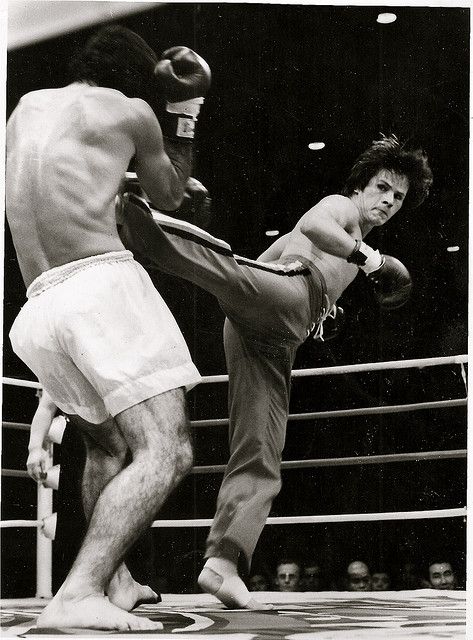
Kickboxing is a combat sport that combines elements of traditional martial arts, such as karate and Muay Thai, with Western boxing techniques. It emerged in the mid-20th century and has since gained popularity worldwide.
Ancient Roots
Various forms of striking arts that incorporated kicks can be found in several ancient civilizations. For example, in ancient China, there were martial arts styles like Shaolin Kung Fu that included kicking techniques.
Similarly, Muay Thai, a martial art from Thailand, also involves striking with fists, elbows, knees, and shins.
Origins in Japan
Kickboxing’s origins can be traced back to the 1950s in Japan. It was during this time that various martial arts schools started experimenting with combining karate techniques with Western boxing punches and kicks. These early forms of kickboxing were known as “karate-boxing” or “karate-do” in Japan.
Development in the United States
In the 1960s and 1970s, American servicemen stationed in Japan became interested in martial arts and brought back their knowledge to the United States. This led to the development of full-contact karate tournaments in the U.S., where fighters utilized punches and kicks to score points.
These tournaments laid the groundwork for what would eventually become kickboxing.
Rise of Full-Contact Kickboxing
By the 1970s, the term “kickboxing” was commonly used to describe the sport.
Full-contact kickboxing matches were organized, featuring fighters from various martial arts backgrounds competing against each other.
These fights allowed the use of both punches and kicks, differentiating kickboxing from traditional boxing.
Emergence of Different Styles
As kickboxing grew in popularity, different styles and rule sets started to emerge. One influential style was the Japanese kickboxing style known as “Kyokushin,” which emphasized full-contact strikes and powerful kicks.
Another important style was the American kickboxing style, which allowed for the use of spinning kicks and knee strikes.
International Recognition and Organizations
In the 1980s, kickboxing gained international recognition and several organizations were established to govern the sport. The International Kickboxing Federation (IKF), World Kickboxing Association (WKA), and World Association of Kickboxing Organizations (WAKO) are among the prominent organizations that oversee kickboxing competitions and regulate the sport.
Integration of Muay Thai Techniques
Muay Thai, a traditional martial art from Thailand, played a significant role in shaping modern kickboxing.
The inclusion of Muay Thai techniques, such as clinching and elbow strikes, added more diversity to the sport and increased its appeal. This fusion of styles is often referred to as “Muay Thai kickboxing.”
Kickboxing in Pop Culture
Kickboxing gained further exposure through televised events and appearances in movies and TV shows. Prominent kickboxing organizations, such as K-1 and Glory, organized high-profile tournaments that featured elite fighters from around the world.
Kickboxing also influenced the development of mixed martial arts (MMA), with many MMA fighters incorporating kickboxing techniques into their fighting styles.
It’s important to note that kickboxing has further evolved and diversified over time, giving rise to various styles such as American Kickboxing, Dutch Kickboxing, and Muay Thai Kickboxing, each with its own techniques and rule sets.
Today, kickboxing continues to be practiced as a competitive sport and a form of self-defense. It has evolved into a diverse discipline with various rule sets and styles, and its popularity continues to grow globally.
